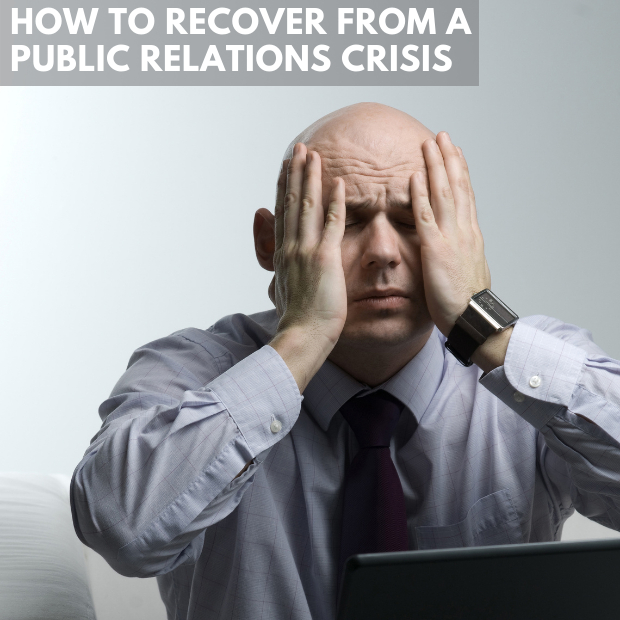
How To Recover From A Public Relations Crisis
5 Steps To Recover From A PR Crisis
Below, we’ve outlined some of the top steps a company should implement to mitigate and recover from a PR crisis.
Analyze The Damage
If your company has fallen victim to a PR disaster, the first thing on your agenda should be to ascertain the damage done to your company.
Take a step back and objectively analyze the damage your corporate reputation has taken. To do this, first determine if there is a public attitude that reflects negatively towards the company or to stakeholders, employees, and customers.
This should be done using digital metrics available to you from your social media platforms, looking at online reviews, as well as benchmarked search results. Focus groups can also provide insights about public perception. You will be able to determine whether there’s been a noticeable shift in perception towards your brand.
Be sure to capture non-media metrics as well, like your company’s share prices, sales performance, and overall profitability. This data will provide you with detailed factual insights into the repercussions of the public relations crisis in question.
After you have analyzed all the data available to you, you’ll have a clearer idea of how to communicate with investors, stakeholders, and customers, and how to respond to media inquiries.
Communicate With Stakeholders & Investors
After combing through all the data, the next step would be to get the word out regarding the impact of the crisis. The most important group of people that you should talk to first would be your company’s stakeholders. This usually includes investors and business partners.
Start off by explaining what events led to the crisis and what measures are being implemented to put a stop to the crisis. Next, mention what future measures will be upheld to ensure that this specific scenario won’t happen again.
The goal should be to get everyone on the same page. You’ve got to prove to each stakeholder that you’ve got a game plan and that you won’t rest until you’ve contained the situation. Remember, timely engagement with key stakeholders is key.
Plan Your Media Communications Campaign Strategy
After getting your shareholders in the loop, the next step is to shape public perception. This part of the process can be viewed as the end goal of all crisis management strategies because it will ultimately determine the success of all your efforts.
Firstly, you will have to leverage the media by carefully selecting brand leaders to issue a public statement. If your company is at fault, you will need to take ownership of all the mistakes you have made.
By not addressing who is to blame or by deflecting blame onto a third party, you could blacken your company’s reputation even more. So, be sure to apologize where and when needed and let the public know that you are resolute in your commitment to resolving the problem.
If your company is not at fault, you’ve got to do the exact opposite. Instead of apologizing, remain steadfast and state your company’s position on the matter.
If the crisis unfolded due to mistruths published by the media, you could seek out a retraction. However, it may be more beneficial to ask the media house in question to publicly apologize for their misprint and to publish the correct version of the story.
Be Transparent
Whether your company is at fault or not, it is extremely important to be forthcoming.
By only apologizing after being caught in the crossfire, people could think that your company knew about the mistake all along. This could render any apology you give insincere and ineffective. It could also give the public reason to believe that you’ll deceive your customers again. In essence, this is exactly what you don’t want.
Instead, by immediately owning your part in the crisis directly after discovering the issue, you could reinforce trust in your company.
It will also enable you to construct the narrative before the media gets hold of the story. This changes everything and allows you to prove that this is an honest mistake rather than a periodic occurrence.
Adjust Your PR Strategy
Lastly, you should take charge online. Although social media could actually contribute to a PR crisis, you can also prohibit this from happening by taking control of all your communication platforms.
Be sure to fully prep your online team so they are equipped to monitor and take charge of conversations on social media platforms, blog commentary sections, Google review sections, and other online platforms.
To take control of the online narrative, you should publish a formal apology on all your online platforms. Make it factual and remember to list all of the ways that you plan on remedying the situation.
Conclusion
A public relations crisis can be scary no matter how long you’ve been in business. But, if handled correctly it can actually showcase your company’s values.
By letting customers know that you are sorry in a timely manner and that you are resolute in resolving the matter, you can effectively mitigate the crisis in question.









